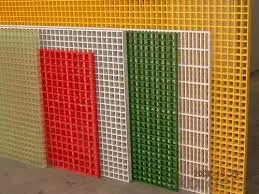
-
 Afrikaans
Afrikaans -
 Albanian
Albanian -
 Amharic
Amharic -
 Arabic
Arabic -
 Armenian
Armenian -
 Azerbaijani
Azerbaijani -
 Basque
Basque -
 Belarusian
Belarusian -
 Bengali
Bengali -
 Bosnian
Bosnian -
 Bulgarian
Bulgarian -
 Catalan
Catalan -
 Cebuano
Cebuano -
 China
China -
 China (Taiwan)
China (Taiwan) -
 Corsican
Corsican -
 Croatian
Croatian -
 Czech
Czech -
 Danish
Danish -
 Dutch
Dutch -
 English
English -
 Esperanto
Esperanto -
 Estonian
Estonian -
 Finnish
Finnish -
 French
French -
 Frisian
Frisian -
 Galician
Galician -
 Georgian
Georgian -
 German
German -
 Greek
Greek -
 Gujarati
Gujarati -
 Haitian Creole
Haitian Creole -
 hausa
hausa -
 hawaiian
hawaiian -
 Hebrew
Hebrew -
 Hindi
Hindi -
 Miao
Miao -
 Hungarian
Hungarian -
 Icelandic
Icelandic -
 igbo
igbo -
 Indonesian
Indonesian -
 irish
irish -
 Italian
Italian -
 Japanese
Japanese -
 Javanese
Javanese -
 Kannada
Kannada -
 kazakh
kazakh -
 Khmer
Khmer -
 Rwandese
Rwandese -
 Korean
Korean -
 Kurdish
Kurdish -
 Kyrgyz
Kyrgyz -
 Lao
Lao -
 Latin
Latin -
 Latvian
Latvian -
 Lithuanian
Lithuanian -
 Luxembourgish
Luxembourgish -
 Macedonian
Macedonian -
 Malgashi
Malgashi -
 Malay
Malay -
 Malayalam
Malayalam -
 Maltese
Maltese -
 Maori
Maori -
 Marathi
Marathi -
 Mongolian
Mongolian -
 Myanmar
Myanmar -
 Nepali
Nepali -
 Norwegian
Norwegian -
 Norwegian
Norwegian -
 Occitan
Occitan -
 Pashto
Pashto -
 Persian
Persian -
 Polish
Polish -
 Portuguese
Portuguese -
 Punjabi
Punjabi -
 Romanian
Romanian -
 Russian
Russian -
 Samoan
Samoan -
 Scottish Gaelic
Scottish Gaelic -
 Serbian
Serbian -
 Sesotho
Sesotho -
 Shona
Shona -
 Sindhi
Sindhi -
 Sinhala
Sinhala -
 Slovak
Slovak -
 Slovenian
Slovenian -
 Somali
Somali -
 Spanish
Spanish -
 Sundanese
Sundanese -
 Swahili
Swahili -
 Swedish
Swedish -
 Tagalog
Tagalog -
 Tajik
Tajik -
 Tamil
Tamil -
 Tatar
Tatar -
 Telugu
Telugu -
 Thai
Thai -
 Turkish
Turkish -
 Turkmen
Turkmen -
 Ukrainian
Ukrainian -
 Urdu
Urdu -
 Uighur
Uighur -
 Uzbek
Uzbek -
 Vietnamese
Vietnamese -
 Welsh
Welsh -
 Bantu
Bantu -
 Yiddish
Yiddish -
 Yoruba
Yoruba -
 Zulu
Zulu
Fundamentals of Drill Rod Connections and Their Importance in Drilling Operations
Understanding Drill Rod Connections The Basics and Its Importance
Drill rod connections are fundamental components of drilling operations, crucial for the effectiveness and efficiency of various drilling projects whether in mineral exploration, geological surveys, or oil and gas extraction. As the drilling industry continues to evolve, understanding the basics of drill rod connections becomes imperative for both new and experienced professionals.
At its core, a drill rod connection serves as the link between individual drill rods, allowing them to form a continuous drilling string. This connection is critical for transmitting rotational force and downward pressure from the drill bit to the surface, enabling the drill to penetrate different types of geological formations. There are several types of drill rod connections, each designed to meet distinct operational needs.
Types of Drill Rod Connections
1. Threaded Connections These are the most common type of drill rod connections. The rods are equipped with male and female threads that screw together to form a tight bond. This type of connection is favored for its ease of assembly and disassembly, allowing for quick changes during drilling operations. However, ensuring proper alignment and torque is vital to prevent issues like cross-threading or excessive wear.
2. Bolt-on Connections These connections use bolts to secure the rods together. While they provide robust strength and stability, they can be more time-consuming to assemble and disassemble compared to threaded connections. Bolt-on connections are particularly useful in heavy-duty applications or when dealing with larger diameter drill rods.
3. Welded Connections In specialized applications, welded connections are used for their high strength. Although these connections provide excellent resistance to fatigue and wear, they are less versatile as they make it difficult to modify the drill string length once welded.
drill rod connections understanding the basics and its ...

Importance of Proper Connection
The integrity of drill rod connections directly impacts the drilling efficiency and safety of operations. Poorly made connections can lead to equipment failure, resulting in costly downtime and safety hazards. For instance, a weak connection may cause a drill string to break under operational stress or create an unsafe situation where portions of the drill string can separate and fall into the borehole.
In addition, the choice of connection type affects the overall drilling operation. Lightweight connections can enhance the maneuverability of the drill, while heavier options may provide added durability and performance in challenging environments. Drillers must consider factors such as the type of material being drilled, depth of drilling, and environmental conditions when selecting connections.
Maintenance and Best Practices
Maintaining drill rod connections is crucial for ensuring their long-term performance. Regular inspections should be conducted to identify signs of wear, corrosion, or damage. Proper lubrication of threaded connections can also help prevent galling and extend the lifespan of the connection. Additionally, it is important to adhere to manufacturer guidelines when tightening connections to ensure they are secure without causing damage.
In conclusion, an understanding of drill rod connections is essential for anyone involved in drilling operations. From ensuring the efficiency of the drilling process to maintaining safety on site, the right choice and maintenance of drill rod connections play a pivotal role. As technology advances and drilling operations become more sophisticated, staying informed about these basics will empower professionals to maximize the potential of their drilling projects.
Latest news
-
Exploring the Benefits of Top Hammer Drifter Rods for Enhanced Drilling PerformanceNewsJun.10,2025
-
High-Precision Fiberglass Winding Machine for GRP/FRP Pipe Production – Reliable & Efficient SolutionsNewsJun.10,2025
-
FRP Pipes & Fittings for Shipbuilding - Corrosion-Resistant & LightweightNewsJun.09,2025
-
Premium FRP Flooring Solutions Durable & Slip-ResistantNewsJun.09,2025
-
Premium Fiberglass Rectangular Tanks Durable & Lightweight SolutionNewsJun.09,2025
-
Tapered Drill String Design Guide Durable Performance & UsesNewsJun.09,2025









